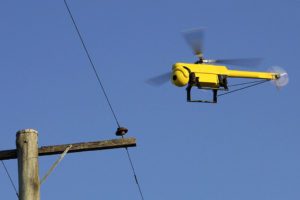
Image: CSIRO, CC 3.0
After a long wait, the Small UAS Rule – affectionately known as Part 107 in the drone industry – becomes effective today. The FAA says that over 3,000 commercial drone operators have registered to be among the first to receive their Remote Pilot Certification with UAS Rating – a commercial drone operator’s license.
At a press conference this morning, Secretary of Transportation Anthony Foxx called the release a “great and momentous occasion,” and says that the new regulation ensures that “innovation and technology have an opportunity to flourish.” Foxx promised that the FAA would continue to move drone integration forward: “This is not an isolated set of rules… it is part of an administrative push,” says Foxx, saying that President Obama has been a “strong partner” in attempts to encourage industry while striking “the right balance between innovation and safety.”
FAA Administrator Michael Huerta also lauded the “virtually limitless possibilities” of the drone industry, and promised that rules about flight over people would be finalized by the end of this calendar year.
While commonly understood to apply primarily to commercial operators, drone law expert and writer John Goglia revealed in Forbes magazine last week that some recreational drone operators may also need a drone operator’s license: specifically, drone racers and others flying FPV (first person view) and those recreational operators who are not members of the AMA or other similar community organization.
For commercial operators, the change is significant: the long, expensive, and often onerous process of applying for a Section 333 Exemption has been eliminated, and operators no longer require a manned aircraft pilot to be part of the 2-person crew. Many commercial operations who have been waiting to go public until they could do so legally have embraced the new system, which requires that an operator pass the “Aeronautical Knowledge Test” and undergo a TSA background check before receiving their certificate.
The FAA says that Part 107 is designed to allow “routine commercial drone operations.” A Remote Pilot Certificate with UAS Rating allows commercial operations within the confines of regulations; those limitations include BVLOS (beyond visual line of sight) flight and flight over people. However, the FAA has also announced that they have implemented a simplified waiver system for commercial operators to apply to operate outside of those restrictions; and Huerta says that 76 waivers were processed today, the first day of implementation.
For now, drone flyers who want to operate commercially should start by reviewing Part 107 here (the complete rule can be found here.) Operators should then register for a test at an FAA Approved Test Site, listed on this page.
While opinions vary about the true impact of Part 107 on the commercial drone industry, there is no question that there will be more commercial operators: the FAA estimates that there will be 600,000 new commercial drone operators over the course of the first year that Part 107 is active.